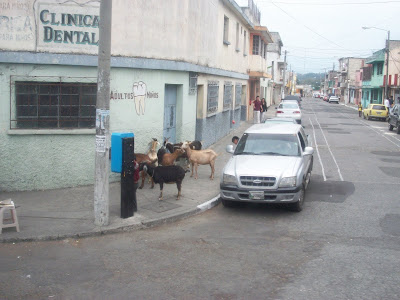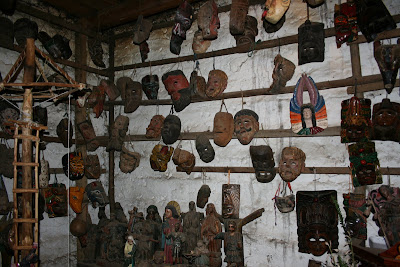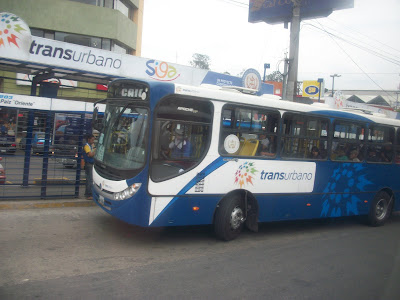Let’s go back to how we got there…..
Six hours after hopping on a bus from Copan, we were descending in the twilight into sparkling Antigua, Guatemala, shadowed even at night by the lone Volcan de Agua. Antigua felt like something from a European dream; classy boutiques, fine dining, quaint cobblestone streets and colorfully painted Spanish-style buildings. We splurged on real Italian pizza, traditional Mexican mole, and bagels with bacon cream cheese, admiring from afar the jade jewelry and five star resorts. It felt too real and posh to be Latin American, not to mention the unnerving quantity of foreigners. Still, it was a beautiful city with some interesting history. Originally known as Santiago de Los Caballeros (Saint James of the Knights), it served for 200 years as the capital of Guatemala. However, it was destroyed repeatedly by major earthquakes in 1717 and 1773 and rather than rebuild the city, they thought it would be better just to start anew and built Guatemala City an hour away (which still has earthquakes, volcanoes and sinkholes…great choice of location). Hence, the city became known as Antigua, so called because it was the old/antigua capital, and was left with ruins of ornate Baroque churches on every corner, really the only unique thing about the place. Despite its charm, or rather because of it, we found Antigua to be mostly a hippie backpacker haven and jumping off point for tours to other parts of the country.



More ruins
Instead of staying long in Antigua, we hopped on a bus to Xela (pronounced Shayla, also known as Quetzaltenango), the second largest city in the country and the site of more authentic Guatemalan culture. It would have been a pretty drive if not for mile after mile of dry, brown, depressing, overfarmed mountain slopes. Xela was dirty, gritty, noisy and certainly not posh, but it had a pleasant central park and nice museums with some great restaurants. The weirdest thing was the waiters who kept saying buen provecho (like bon appétit) every time they came to the table, even when no food was around. We took a free salsa class, ate tamalitos (mini tamales), saw a locally produced movie at a small theater and spent time learning about the history of famous local marimba music, world-renowned Guatemalan athletes, and antique copy machines. Some of the other random museum highlights included a theodolite (the instrument Nolan uses to do water surveys), and some pitifully taxidermied animals that were half decomposed.
Xela also has some interesting history. After Central America won its independence from Spain in 1821, it formed a unified federation of Central American states. As the republic began to crumble from civil war in 1838, the central Guatemala highlands formed a separate sixth state known as the Estado de Los Altos, of which Xela was the capital. The state faced fierce pressure from the rest of Guatemala to unify, resulting in many bloody battles, and eventually in the collapse of the Estado de Los Altos just 2 years after it was formed. The greatest lasting legacy of this state is the image of the legendary quetzal bird on the Guatemala flag, which was first featured on the Los Altos flag.



From Xela we took a day trip to the small town of Chichicastenango, taking the bus trip of a lifetime. While the main transportation route is a pleasantly paved five-lane super-highway, the roads wind around and up and down huge mountains constantly. It was a lot like being on that spinning ride at county fairs where you get flung into the person next to you, only since we were going around corners back and forth, you would get squished into someone on your right, then immediately thrown back to your left. We used all our arm muscles for two straight hours to keep ourselves from falling onto the Mayan woman sleeping next to us. We also decided that PCVs in Guatemala should all be issued knee-pads to wear on the bus since bracing yourself on the seat with your knees is absolutely necessary. It was then that we would witness the closest thing to an Indiana Jones move you will ever see in real life. Our bus ayudante on a chicken bus (big yellow school bus which they actually call “cheek-in buus”) stood in the front doorway, grabbed some unseen notch on the roof, stuck his foot on the window ledge and flung himself up and onto the roof in one smooth move. He clambered over the roof, adjusting and/or scaling luggage, only to somehow open the back door and swing himself in, all in less than a minute while we were still crazily careening through mountain curves. UNBELIEVABLE! At first we thought it was some strange magic trick, the disappearing ayudante, but we figured out it was a tactic used when the bus was full to collect fares in the back without marching up the jammed aisle twice.
Guatemalan bus culture will never cease to amaze us. Apparently it’s a rule that no one can be standing on a bus, unless every row has three to a seat. Sounds reasonable and safe until you realize you will never be on a bus that doesn’t have three to a seat, i.e. there will always be standing people in a modified aisle that is 8 inches wide at the most. Or rather usually two to a seat, then one large-assed man straddling the aisle with 1/8 butt cheek barely clinging to each side. The only good thing about the sardine-like configuration is that you can give your arms a rest from preventing your sideways sliding and just lean into the guys legs in the aisle with all your body weight and act like it’s no big deal. When there are just two people to a seat, beware, some tiny Mayan woman might accidentally sit down onto your lap without so much as a ‘permiso’ to indicate she had the intention of sitting. It’s like musical chairs, they start to walk by, then the music stops to they have to find a seat wherever they can, sidling in like an unwanted guest. Add in some sweat and miscellaneous body hair and you have the makings of a truly memorable Guatemalan ‘cheek-in bus’.
Anyway to get back to Chichi… As soon as we turned off the main highway and hopped on a busito, we were surrounded by people speaking a foreign language, Maya Quiche. This traditional Mayan language sounds nothing like Spanish, actually more like a Slavic dialect, and it was then we really felt we had entered a new cultural space. We arrived soon to the city center, jam-packed Thursdays and Sundays when the biweekly Mayan market takes place. We’d heard it was impossibly touristy, but were so glad we still made the trip. We hired an overpriced guide (the son of the Mayan shaman who gave us the insider info about the world not ending) to show us around, and he gave us great insight into Mayan spiritual practices. The main worship spot in town is a Catholic church built on the ruins of a Mayan shrine. The Mayans engage in their age-old spiritual practices right alongside modern Catholicism, a truly inspiring blending of religions. There are 150 men and 150 women Mayan spiritual guides at any given moment who are the only people allowed to give intercessions to the gods for others. They burn incense in lung-choking quantities and cover stone slab alters with white (for boys) and pink (for girls) rose petals and colored candles to ask for good health, safe trips, luck in love, bountiful harvest, or a good future for your kids, all in the midst of a traditional Catholic church with its own altars, shrines and prayer spaces.

Our guide also led us up a hill near town, the top of which is a scared Mayan site. It was here that the Maya people dug from the ground a shrine, called Pascual Abaj, which they now regularly worship by burning food, Coke, flowers, candles, seeds, plants and perfume and chanting in Maya Quiche. It was an amazing privilege to witness and explore these private and sacred ceremonies, and we felt like we gained some great insight into the Mayan culture that we would have missed without our guide. On the way down we stopped at an out-of-the-way antique shop (probably in cahoots with the guide) and were able to purchase an amazing jaguar/snake wood mask that had once been used in ceremonies. The market itself was nothing spectacular, just a maze of hundreds of vendors selling almost identical products and calling out, “hey, my friend, I give you good price.” The woven items are truly spectacular in their colors and designs, some detailed shawls taking months to complete as they are woven and then embroidered by the skilled hands of Mayan women. Because of the time involved, the prices are staggering, hundreds of dollars for some items, and rightfully so. All in all, the day in Chichi was memorable, and our bus ride home just as action-packed as Raiders of the Lost Ark.

From Xela we stopped back in Antigua briefly before catching a loathsome 9 hour bus from there to Flores, an almost-island town in the middle of a lake in northern Guatemala. The weather got progressively warmer and more humid as we dropped from 2300-meter-high Xela to sea-level, jungle-laden Flores. Barely 8 hours after we arrived in Flores, we were on a 5 am busito headed to the ruins of Tikal. We were the first people to enter the ruins site that day, and although we missed sunrise, it was worth it to get there early to beat the crowds and the heat. We started walking up into the dense jungle, without a clear sense of where we were going. The map was little help and we could see no ruins around us. All the sudden, we stepped out from behind the trees into a little clearing and the Temple of the Great Jaguar rose 47 startling meters in front of us! It was like stepping into a different world, a different time, channeling Indiana Jones yet again as if we were on one of his hair-raising archaeological adventures. We were completely alone, surrounded by screeching birds and roaring howler monkeys, surrounded on all sides by massive, beautiful stone temples rising from the jungle floor.
Tikal is impressive because of the size of its temples, six in all, four over 45 meters (~150 feet ) tall, and most of which you can climb up on creaky wooden stairs (they don’t let you climb the steep steps in front, with good reason, people have died) then look out over the jungle for miles. The temples have lost most if not all of their decorative carvings and color, so you can only try to imagine what they looked like at the height of the civilization. What’s even more amazing is the fact that this incredibly important and powerful site was “lost” in the jungle for hundreds of years after the Maya people abandoned it and that only in the past 10-20 years archaeologists have completed digging out and renovating many of the grand monuments. Thousands more structures have yet to be recovered from the fast-growing jungle vegetation that covers them in soil and roots in no time. You sort of wish it just always looked the way it does now and that people found it intact, but everything you see has been restored. Also, because it was not near any body of water, Tikal had a very intricate system of water catchment ponds and canals that served nearly 100,000 people at its height.

















No comments:
Post a Comment